That little can of Underwood Deviled Ham on your grocer’s shelf has a long history that goes back to feeding the Union Army, building the biggest sardine factory on the Maine coast and starting the profession of food science.
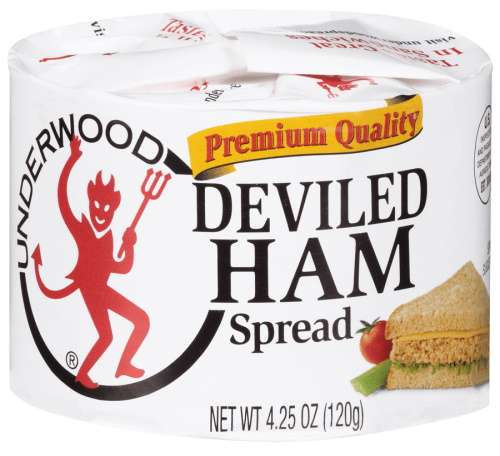
The William Underwood Company sold quality canned foods to working-class city dwellers and westward-bound pioneers from its Boston factory since 1822. You can still buy Underwood Deviled Ham, which has been around since 1868. Like so many processed food companies, though, Underwood now belongs to a multinational food conglomerate.
But throughout its independent existence, the William Underwood Company made food history. Here are six fun facts about the company and its famous Underwood Deviled Ham.
1. The Mass. Board of Health Endorsed Underwood Deviled Ham
In 1906, the Massachusetts Board of Health prohibited the sale of deviled meats in Massachusetts, except for Underwood Deviled Ham. William Lyman Underwood, the founder’s grandson, had taken an interest in food safety. Specifically, he wanted to figure out how to stop canned clams from exploding.
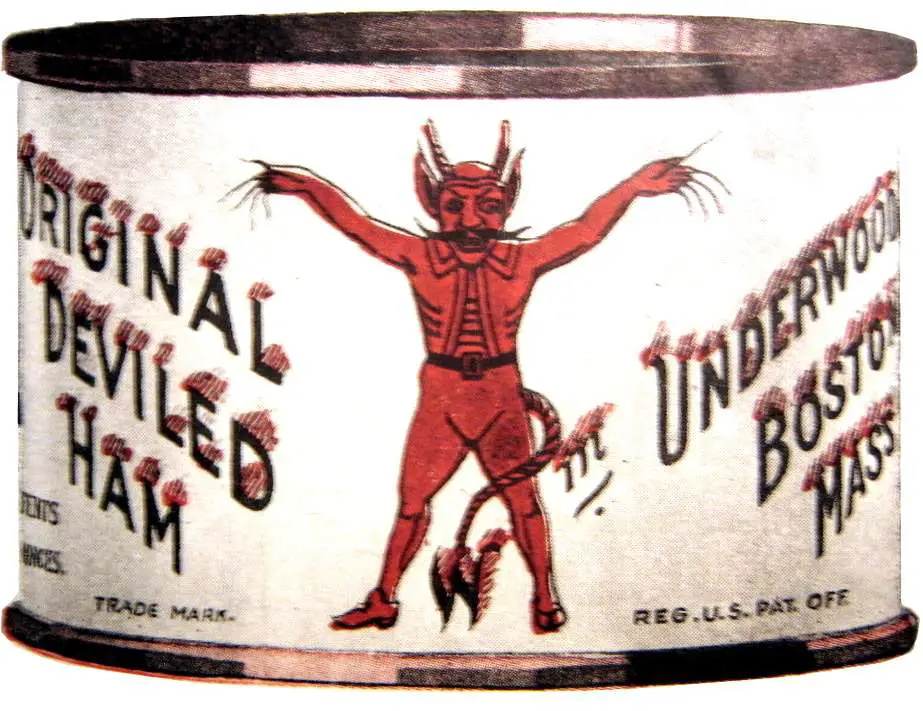
In 1895, he began working with an MIT biologist, Samuel Cate Prescott, on a solution. Underwood and Prescott spent a year on the problem, but it was worth it. They figured out a way to kill heat-resistant bacterial spores. They then conducted similar research into other canned food, dicovering, for example, how to prevent canned peas and asparagus from going sour.
Their work at MIT led to food science becoming a profession. The Underwood company collaborated with MIT for many years. In 1969, Underwood president George Seybolt donated $600,000 to MIT to create the Underwood Professorship, held today by Steven Tannenbaum.
2. Napoleon Jumpstarted the Canning Business
Underwood Deviled Ham owes its existence in part to Napoleon Bonaparte, who inspired the practice of canning food. His ar my needed food that could travel long distances (to Moscow, for example), and so he offered a 12,000 franc award to anyone who could figure out how to do it. The prize went to a confectioner named Nicolas Appert in 1810.

Who knew? The father of canned food.
Appert filled thick, wide-mouthed glass bottles with foodstuffs — meat, eggs, chicken — and then corked it with a vise, leaving air at the top of the bottle. He then wrapped the bottle in canvas and dunked it in boiling water.
Soon the British caught on to what their enemy was up to. The story goes that a Frenchman named Philippe de Girard used Appert’s methods to preserve food in tin canisters. He found a British merchant, Peter Durand, who patented his process in England in 1810. He then sold the patent to a British company that became Crosse & Blackwell.
European canning companies thrived selling canned goods to the military during the continent’s many 19th century wars.
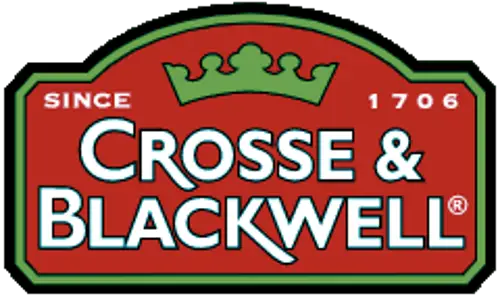
A young Englishman named William Underwood learned canning techniques as an apprentice at Crosse & Blackwell. Then he immigrated to the United States in 1817, landing in New Orleans. Underwood decided to walk around the new country, checking out all 20 states before settling in Boston.
3. Deviled Ham and Sardines Made “Devildine” Sandwiches. Yum!
Underwood Deviled Ham became a pantry staple, adaptable as a sandwich spread, an hors d’oeuvre, a dip or a salad. In 1928, Florence A. Cowles published a cookbook, Seven Hundred Sandwiches, with a “devildine sandwich” recipe that demonstrates deviled ham’s versatility.
“Remove bones and tails from a medium-sized can of sardines and thin to a pates with lemon juice. Add a small can of deviled ham (not potted ham), one hard-boiled egg, chopped fine, a chopped olive and a tablespoon of mayonnaise. Trim slices of white bread, butter, lay on a lettuce leaf and spread with devildine.” (Sounds disgusing, but who knows?)
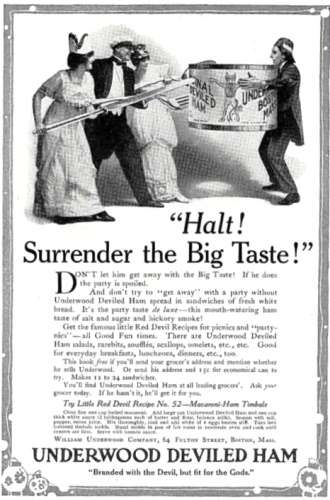
How does Little Red Devil Recipe No. 52 sound — Macaroni Ham Timbale?
In 1911, the company had offered its own book of deviled ham recipes for picnics and “partynics” — “all Good Fun times.” Underwood Deviled Ham was the “party taste de luxe with mouth-watering ham taste of salt and sugar and hickory smoke.” read a magazine ad that year.
4. Americans Were Slow To Embrace Canned Foods
Young William Underwood’s business started slowly, in part because he couldn’t give away canned foods to the suspicious U.S. consumer in 1820. He began selling fruit and berries — damsons, quinces, currants and cranberries – to foreign markets. He shipped his product, hermetically sealed in glass jars, to the East and West Indias, Hong Kong, India, Gibralter, South America and the Philippines.

William Underwood
Underwood then expanded to pickles, mustard, ketchup, milk, cranberries and tomatoes – the latter a risky move because many people considered tomatoes poisonous back then. (Even now, Tom Brady won’t eat them.)
Boston glassmakers couldn’t keep up with the company’s insatiable demand for bottles. Underwood also found that tin canisters were a lot cheaper. So in 1839 he began substituting tin canisters for glass bottles. His bookkeepers got tired of writing “tin canisters,” so they shortened the phrase to “can.” They are credited with popularizing the change.
Settlers heading west during the 1840s and 1850s stocked up on Underwood canned food. The company also sold canned roast beef and other meat to Union soldiers during the Civil War.
Underwood’s experience with condiments and meat combined to create Underwood Deviled Ham in 1868. Today, its ingredients include mustard, spices and turmeric.
5. Not Exactly Kosher — Shellfish, Too
In 1844, Underwood built a lobster canning factory, one of the first, in Harpswell, Maine. Underwood workers started off boiling lobsters in an iron pot on a tripod on the beach.
Six years later, Underwood built an oyster canning plant in Boston, then the hub of the East Coast oyster industry.
The company added salmon in 1851. According to lore, the first gold sent back from the Gold Rush of 1849 arrived in an Underwood salmon can.
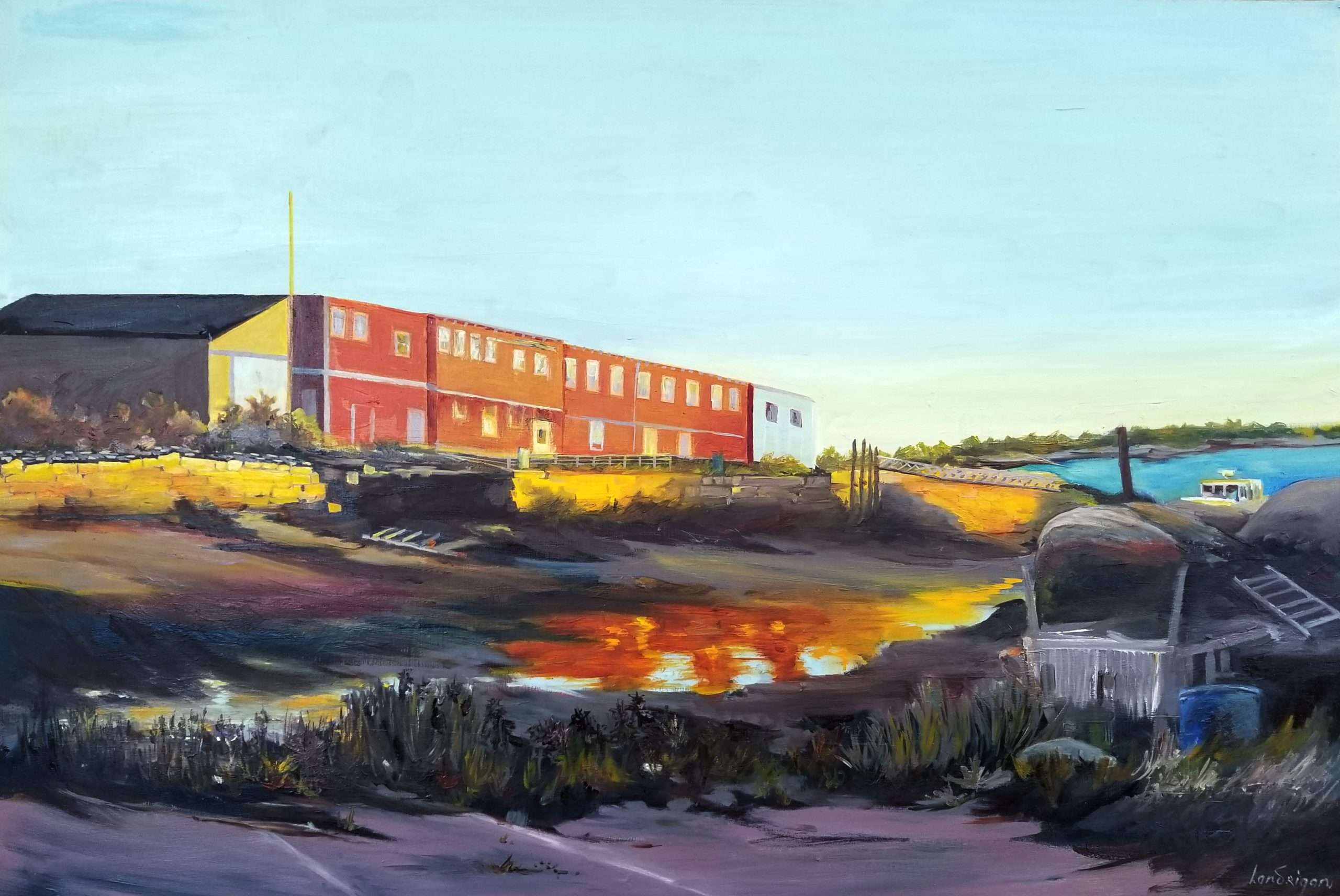
Sardine Factory, Oil on canvas by Leslie Landrigan
In the early 1850s, William Underwood built another lobster canning factory on Steamboat Wharf in Southwest Harbor. But then summer tourists began arriving on Mount Desert Island and brought with them complaints about the noise and smell of the canning factory. Eventually, Underwood moved the factory to nearby Tremont.
In 1880, Underwood built what was then called the largest sardine cannery in Jonesport. The company built another in Bass Harbor in 1889. Eventually every coastal Maine town would have a canning factory. Today, none are left.
6. Oldest Food Trademark in the U.S.
Underwood registered a trademark for its devilish logo on Nov. 29, 1870 with the new U.S. Patent Office. The trademark identified “meat entremets” intended for “Sandwiches, Luncheons, and Traveler’s Repasts.”
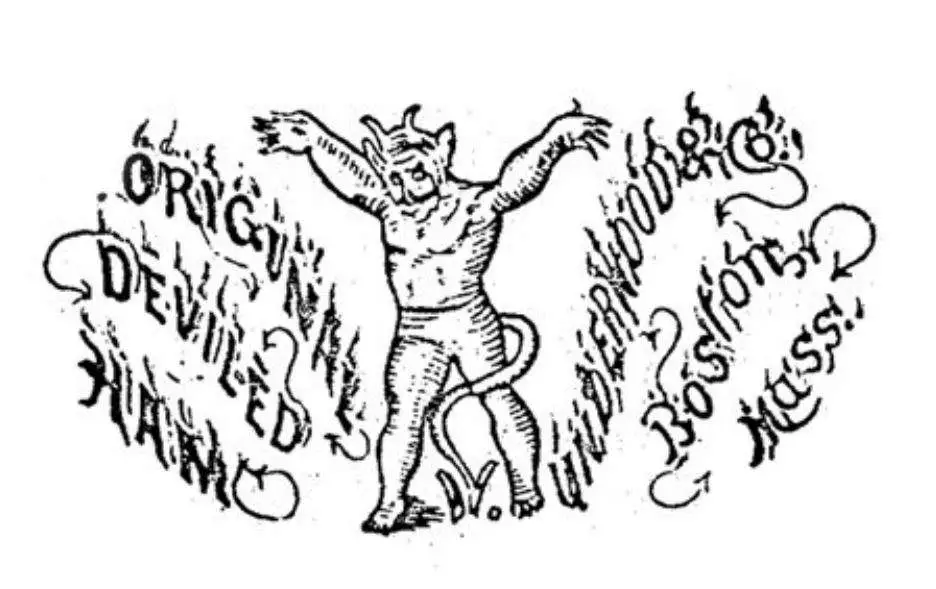
Hmm. how does
Note the “W” at the end of the devil’s tail – which stands for “William,” as in “William Underwood.” Over time, the “W” disappeared and the devil acquired a pitchfork and a friendly smile.
It was the 82nd trademark registerred, and not the first one for food. That honor belongs to J.B. Baldy & Co. Railroad Brand Mustard.
It is, however, the oldest food trademark still in use in the United States.
The New England Historical Society’s book, Historic Thanksgiving Foods, is an Amazon #1 New Release in Thanksgiving Cooking. Buy it now in paperback or as an ebook.
Image: William Underwood By Cfpyne – I scanned an old family photoPreviously published: Ancestry.com, CC BY-SA 4.0, https://commons.wikimedia.org/w/index.php?curid=79826182. This story updated in 2023.
